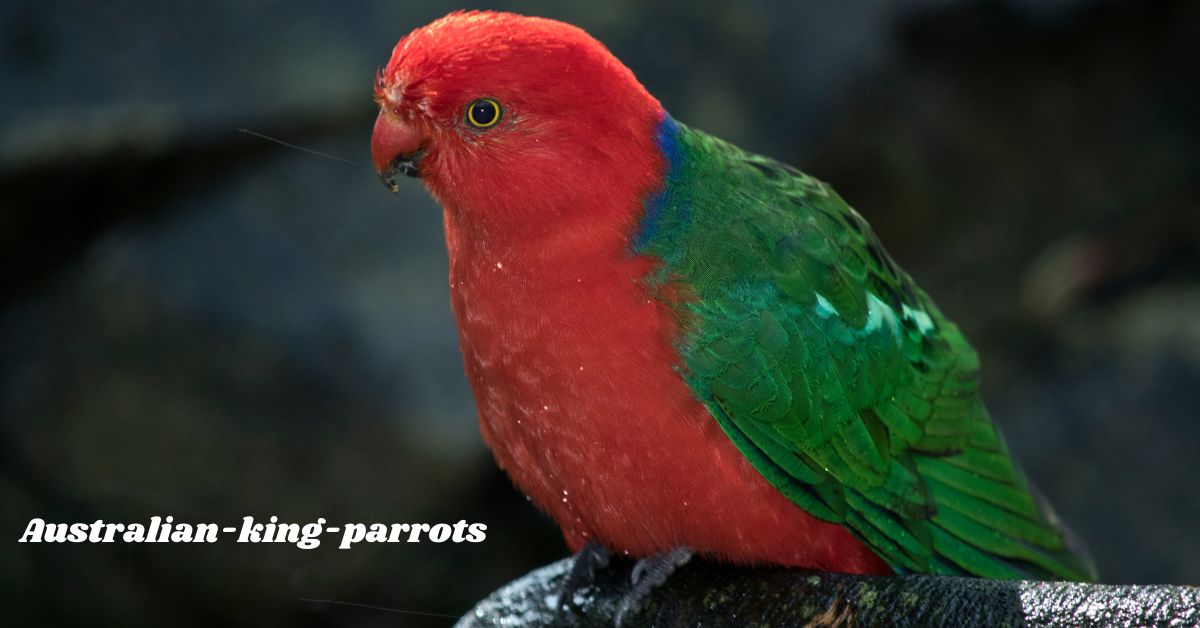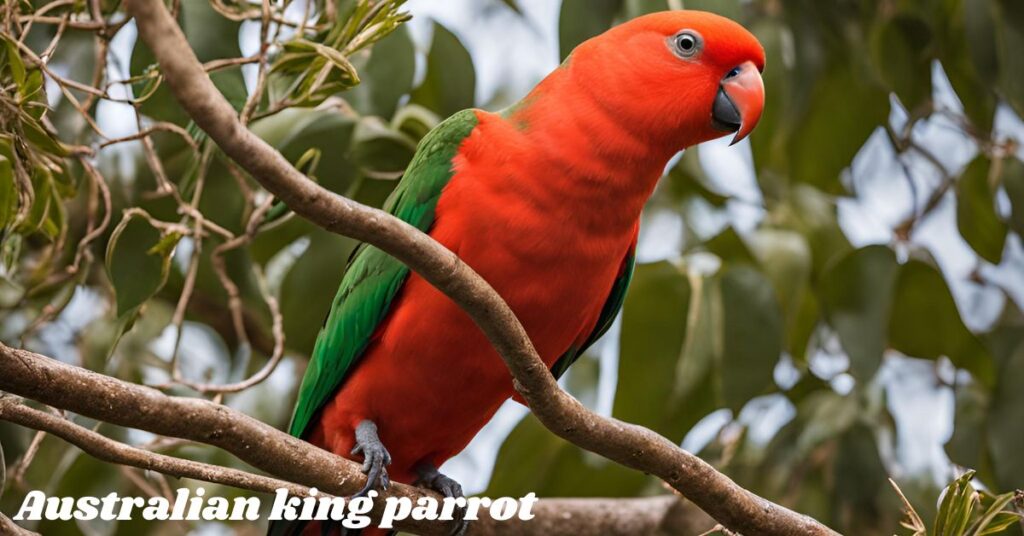Key Takeaways
- King-Parrots are colorful fowls local to Australia.
- They have special behaviors and characteristics.
- Understanding their propensities can offer assistance winged creature devotees and pet owners.
- King-Parrots are prevalent in aviaries and as pets.
King-Parrots are staggering winged creatures with dynamic colors and charming identities. These fowls are local to Australia and are a favorite among winged creature watchers and pet proprietors. In this exposition, we will reveal 15 fun realities approximately King-Parrots that will astonish you. We’ll investigate their behaviors, propensities, and the stars and cons of having them as pets. This direct is planned to be straightforward and open for everyone.

Table: Quick Facts About King-Parrots
| Fact | Details |
|---|---|
| Colors | Males: Red head and chest, Females: Mostly green |
| Habitat | Eastern coast of Australia |
| Diet | Seeds, fruits, berries, nuts |
| Lifespan | Up to 25 years in the wild |
| Breeding Season | September to January |
| Size | Up to 43 cm (17 inches) |
| Conservation Status | Not endangered |
| Vocalizations | Whistles, chattering |
| Intelligence | High, capable of learning tricks |
| Pet Suitability | Good, gentle nature |
15 Fun Actualities Around King-Parrots

1. Dynamic Colors
King-Parrots are known for their shinning and striking colors. Guys have ruddy heads and chests, whereas females are for the most part green. These colors make them effectively recognizable and profoundly attractive.
2. Local to Australia
These fowls are local to the eastern coast of Australia, from Queensland to Victoria. They occupy rainforests, eucalyptus timberlands, and rural areas.
3. Diet
King-Parrots basically eat seeds, natural products, berries, and nuts. They are moreover known to appreciate grains and blossoms.
4. Social Behavior
King-Parrots are social winged creatures that frequently travel in sets or little herds. They are known for their inviting nature and can gotten to be very tame around humans.
5. Lifespan
In the wild, King-Parrots can live up to 25 a long time, whereas in confinement, with legitimate care, they can live indeed longer.
6. Breeding Season
The breeding season for King-Parrots is from September to January. They as a rule settle in tree hollows, laying almost 3-6 eggs.
7. Vocalizations
King-Parrots have a assortment of calls, from shrieks to chattering. They are not as loud as a few other parrot species, which makes them reasonable as pets.
8. Flight Patterns
These fowls are solid fliers with coordinate flight designs. They can cover expansive separations in look of food.
9. Preservation Status
King-Parrots are not considered imperiled. They have a steady populace, much obliged to their flexibility to different habitats.
10. Intelligence
King-Parrots are cleverly fowls competent of learning traps and mirroring sounds. They require mental incitement to anticipate boredom.
11. Intelligent with Humans
These Parrots regularly visit gardens and feeders, particularly when nourishment is rare in the wild. They can gotten to be very usual to human presence.
12. Pet Potential
Due to their delicate nature, King-Parrots make great pets. They are less forceful compared to other parrot species and can frame solid bonds with their owners.
13. Plume Maintenance
These Parrots take great care of their quills, frequently seen trimming to keep their plumage in beat condition.
14. Size
Adult King-Parrots can develop up to 43 cm (17 inches) in length, counting their long tails.
15. Special Eyes
These Parrots have one of a kind eye designs, with shinning orange or yellow eyes that stand out against their colorful feathers.
Advantages of Keeping King-Parrots
- Beautiful Appearance: Their dynamic colors include excellence to any environment.
- Gentle Nature: They are less forceful and simpler to handle than a few other parrot species.
- Long Life expectancy: With appropriate care, they can be long-term companions.
- Intelligent: They can learn traps and appreciate connection with their owners.
Further Nitty gritty Data on King-Parrots

Habitat and Distribution
These Parrots occupy a extend of situations over the eastern coast of Australia. They are regularly found in subtropical and mild rainforests, as well as eucalyptus timberlands. In a few locales, they have adjusted to living in rural regions, making visit visits to gardens and parks. This versatility to diverse territories makes a difference them flourish in different environments.
Breeding and Nesting
During the breeding season, King-Parrots look for out tree hollows to settle in. These hollows give a secure environment for laying eggs and raising chicks. The female more often than not lays between 3 to 6 eggs and incubates them for around 20 days. Once the chicks bring forth, both guardians take an interest in nourishing and caring for them. The youthful fowls fledge around five weeks after bring forth but stay subordinate on their guardians for a few more weeks.
Social Structure
King-Parrots are known for their solid social bonds. In the wild, they regularly frame little herds, as a rule comprising sets or family bunches. These social structures offer assistance them find nourishment sources and give security from predators. In imprisonment, it is critical to give them with social interaction to anticipate depression and stress.
Communication
These Parrots communicate through a run of vocalizations. Their calls change from delicate shrieks to uproarious, sharp notes. These vocalizations are utilized for different purposes, such as pulling in mates, signaling caution, and keeping up contact with run individuals. Understanding their calls can give bits of knowledge into their behavior and well-being.
Feeding Behavior
King-Parrots have a differing slim down that reflects their versatility. In expansion to seeds and natural products, they devour a assortment of plant materials, counting blooms, buds, and indeed nectar. This changed slim down makes a difference them get the fundamental supplements for their wellbeing. In confinement, it is basic to imitate this differing qualities to guarantee they get a adjusted diet.
Health and Care
Maintaining the wellbeing of These Parrots in imprisonment includes giving a adjusted count calories, clean living conditions, and customary veterinary check-ups. These winged creatures can be inclined to certain wellbeing issues, such as plume culling and respiratory diseases, if their needs are not met. Guaranteeing they have adequate space for work out and mental incitement is too vital for their well-being.
Behavioral Traits
These Parrots show a run of behaviors that reflect their insights and social nature. They appreciate intuitively toys and perplexes, which offer assistance keep their minds locked in. These feathered creatures can too create solid bonds with their proprietors, regularly looking for out consideration and fondness. Understanding their behavior can offer assistance proprietors make a supporting and fortifying environment.
Conservation and Human Impact
While These Parrots are not as of now imperiled, living space devastation and urbanization can affect their populaces. Preservation endeavors center on protecting their characteristic territories and advancing mindfulness around their environmental significance. In rural regions, giving fowl feeders and planting local vegetation can bolster neighborhood King-Parrot populations.
Lifespan and Longevity
In confinement, the life expectancy of King-Parrots can surpass 25 a long time with appropriate care. Components that contribute to their life span incorporate a nutritious slim down, normal work out, and a stress-free environment. Observing their wellbeing and giving enhancement exercises are key to guaranteeing a long and sound life.
Unique Physical Characteristics
Aside from their striking colors, These Parrots have other interesting physical characteristics. Their solid, bended snouts are well-adapted for breaking open seeds and nuts. Their zygodactyl feet (two toes indicating forward and two in reverse) empower them to get a handle on branches and control nourishment with ease. These physical adjustments make them proficient at scavenging both in the wild and in captivity.
Interaction with Other Species
In the wild, King-Parrots regularly associated with other winged creature species, such as rosellas and cockatoos. These intelligent can be agreeable, such as when scavenging for nourishment, or competitive, particularly amid the breeding season. Understanding these intelligent can give bits of knowledge into their social elements and behavior.
Legal Considerations
For those interested in keeping King-Parrots as pets, it is critical to be mindful of legitimate directions. In numerous districts, licenses or licenses are required to possess local Australian fowls. These controls are in put to guarantee the fowls are sourced morally and to anticipate illicit natural life trade.
Cultural Significance
These Parrots hold a extraordinary put in Australian culture. They are frequently included in innate craftsmanship and legends, symbolizing magnificence and elegance. Their nearness in rural regions has too made them a adored portion of neighborhood natural life, acknowledged for their dynamic colors and inviting demeanor.
Pet Care Tips
For those considering King-Parrots as pets, here are a few fundamental tips:
- Provide a open cage: King-Parrots require room to fly and work out. A huge aviary is ideal.
- Offer a changed slim down: Incorporate new natural products, vegetables, nuts, and seeds in their diet.
- Ensure social interaction: Spend time collaboration with your parrot day by day to keep them rationally stimulated.
- Regular veterinary care: Plan check-ups with an avian veterinarian to screen their health.
- Enrichment exercises: Give toys and astounds to keep them locked in and avoid boredom.
Disadvantages of Keeping King-Parrots
- Large Space Necessity: They require open walled in areas to fly and exercise.
- Dietary Needs: A changed and nutritious slim down is fundamental to keep them healthy.
- Noise: Whereas not greatly loud, they do vocalize, which might be exasperating for some.
- Attention Needs: They require mental incitement and social interaction to anticipate boredom and stress.
FAQ’s
Where are King-Parrots found?
King-Parrots are local to the eastern coast of Australia, from Queensland to Victoria.
What do King-Parrots eat?
King-Parrots eat seeds, natural products, berries, nuts, grains, and blossoms.
How long do King-Parrots live?
In the wild, King-Parrots can live up to 25 a long time. In imprisonment, they can live indeed longer with appropriate care.
Are King-Parrots great pets?
Yes, due to their delicate nature, dynamic colors, and insights, King-Parrots make great pets.
When is the breeding season for King-Parrots?
The breeding season for King-Parrots is from September to January.
Conclusion
King-Parrots are intriguing feathered creatures that charm fowl devotees and pet proprietors alike. Their dynamic colors, inviting nature, and insights make them a bliss to watch and care for. Whereas they have particular needs, such as a open environment and a shifted eat less, the rewards of having these wonderful feathered creatures as companions are monstrous. Whether you are observing them in the wild or caring for them at domestic, King-Parrots are beyond any doubt to astonish and enchant you with their special characteristics and behaviors.



Pingback: "Parrot Fish: Fascinating Facts and Stunning Images You Need